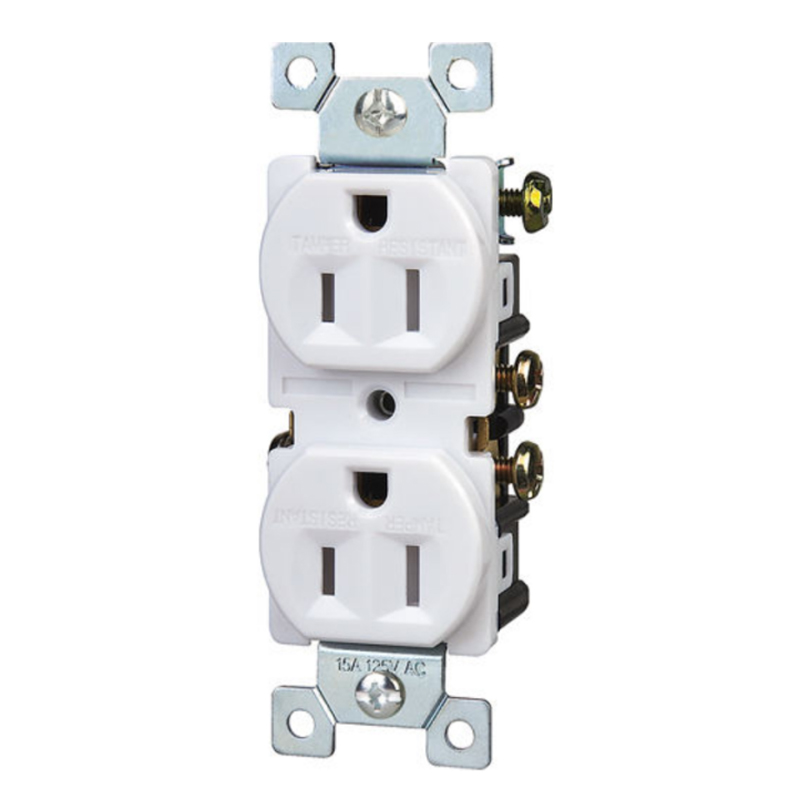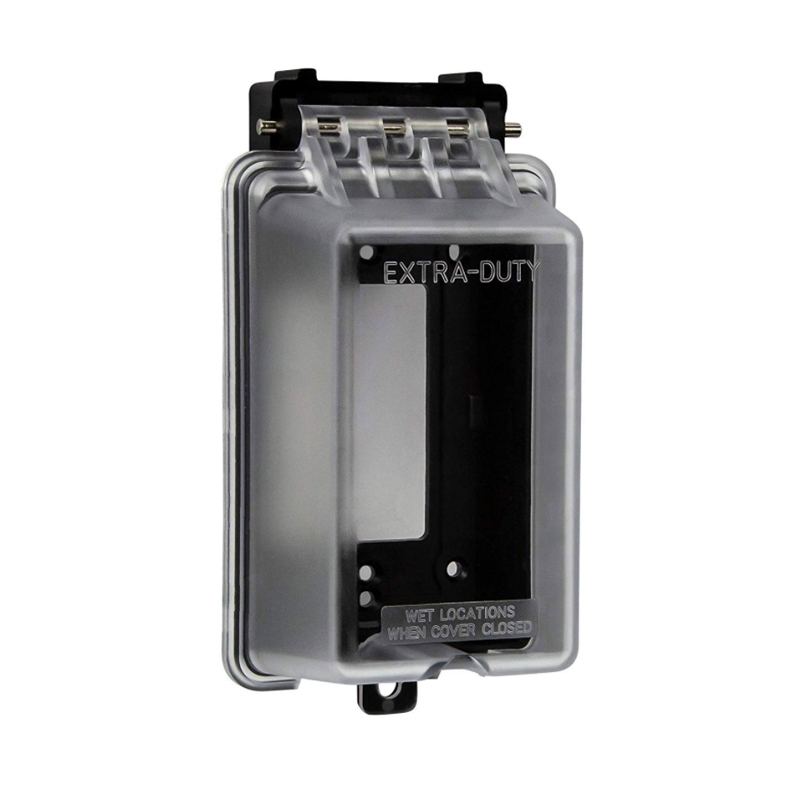By Nicole Fallon | Updated Nov 29, 2023 11:16 AM
We may earn revenue from the products available on this page and participate in affiliate programs. Stainless Steel Face Plates

A: Ground fault circuit interrupters, or GFCIs, are outlets designed to shut off when they sense a ground fault or short in electricity. When a GFCI outlet senses an overload or surge in electricity, it will instantly trip, triggering the breaker to cut off the electrical current to minimize the risk of electrocution. For safety reasons, building codes require that a GFCI outlet be used near any water source or moisture due to the increased risk of an appliance shorting.
When a GFCI won’t reset, it requires a bit of testing to figure out what’s going on. If a GFCI outlet isn’t working, triggers such as the presence of moisture or dust, bad electrical connections, or something more serious can cause the outlet to trip. Luckily, there are several things homeowners can do to try and identify the problem before calling in an expert electrician.
Because multiple outlets in a room can be connected to the same circuit, a non-functioning GFCI outlet could cause issues with nearby outlets as well. Understanding how the internal wiring is laid out in a home will make it easier for a homeowner to pinpoint the issue and determine if it’s a GFCI problem or something else that needs to be addressed by a professional.
Homeowners will want to test a plug-in appliance to see if the issue persists in just one outlet, in outlets throughout the room, or if the issue expands throughout the entire home. If the outlets are only affected in the one room, there’s a good chance the GFCI outlet caused the problem. Homeowners will want to also test multiple appliances to ensure that it is, in fact, an issue with the GFCI outlet not working and not an issue with the appliance itself.
Each GFCI outlet has a test and reset button, often labeled black for the test button and red for reset. These buttons can test the power running through the GFCI circuit and reset the outlets.
To properly test and reset the GFCI, homeowners will want to unplug all appliances sharing the same circuit as the GFCI and then press the reset button on the GFCI outlet. If they hear a click once the button is pressed, they can try plugging in the appliances, as the outlet should be functioning again.
However, if the outlet continues to trip once it’s been reset, it may be getting overloaded by the number of appliances plugged into it around the room. To test if it’s the number of devices being plugged in, homeowners can use a process of elimination to figure out which appliance is causing the issue by plugging in one appliance at a time until the GFCI outlet trips again.
In most newer homes today, updated GFCI outlets have a self-testing feature in which green and red LED indicators show whether an outlet is operating correctly or if it is faulty and needs to be replaced. Many homeowners will find that they have older GFCI outlets installed that need to be manually tested. Luckily, testing outlets can be an inexpensive task with life-saving benefits.
To manually test GFCI outlets, homeowners can use one of the best circuit breaker finders to check if an outlet is receiving any power or if it’s dead and needs to be replaced. Circuit breaker finders are tools that can read and display how strong of an electrical current each outlet is receiving and can determine if an outlet is functioning properly. Homeowners will want to test all nearby outlets to see if just one outlet is being affected or if the entire room’s power is being affected.
A GFCI outlet won’t work if a breaker has tripped or if a fuse has blown. Homeowners can check the main electrical panel to see if a blown fuse causes the issue and if so, replace the fuse and reset the GFCI outlet. Otherwise, they’ll want to check to see if the breaker for the corresponding room has tripped.
To determine if a breaker has tripped, homeowners can look at the buttons inside the breaker box. The breaker switch should either be flipped to “off” or “on. However, if a switch is located in the middle position, that means it has tripped and needs to be reset. To reset it, homeowners will first flip it to the “off” position, then switch it to the “on” position. They’ll want to be sure to reset the GFCI outlet as well. If the breaker trips again after this fix, the issue could be a short circuit which can be dangerous and should be addressed by a licensed specialist.
If a GFCI outlet senses that there is moisture present in or near the outlet, it will trip as a way to prevent electrocution. When it trips, it shuts off and stops electricity through the outlet as a safety measure. If moisture happens to be present in the outlet, it’s crucial that homeowners to remove all traces of it before resetting the GFCI and attempting to plug anything into it.
To remove moisture, homeowners can try plugging a hairdryer into a different outlet nearby and aim it at the GFCI outlet that has moisture present. They’ll want to allow the hairdryer to thoroughly remove the moisture from the area before continuing, as any presence will cause the GFCI reset to be unsuccessful. Once the outlet has been completely dried, the homeowner can press the reset button and listen for the click noise, which indicates the outlet has been reset and power has been restored.
Before checking the electrical connections in a GFCI outlet’s wiring, homeowners will want to turn off the breaker connected to the outlet. After double-checking the breaker has been flipped to the “off” position, they can then unscrew the faceplate from the outlet and remove the screws that hold the outlet in the wall. From there, the outlet can be pulled a little way out of the wall for easier access.
Once the wires have been exposed, homeowners will want to gently tug on each one to confirm if they are securely fastened underneath the screws. If a wire isn’t securely fastened, it will need to be cut and reattached securely underneath the screw to ensure it’s well connected. As a rule of thumb, black wires should be attached to gold screws, and white wires should attach to silver screws, and the screw should securely fasten each wire on the side of the outlet.
Sometimes, a seemingly faulty GFCI outlet can indicate a bigger problem that should be addressed by a professional who has a better understanding of the issue. It is inadvisable for inexperienced homeowners to perform extensive electrical repairs on their own, as this can pose a severe risk of injury, such as electrocution, as well as the increased risk of property damage.
If the issue seems to be more invasive than a quick DIY repair, homeowners will want to contact a licensed electrician to have them take a look. Depending on location, electricians cost around $50 to $100 per hour or around $300 per project and have specialized, high-tech equipment that can help detect problems homeowners may not have known about. Professionals will be able to determine why the GFCI outlet isn’t working and can pinpoint and repair any additional electrical issues that may be present.
Articles may contain affiliate links which enable us to share in the revenue of any purchases made.
Registration on or use of this site constitutes acceptance of our Terms of Service.

Standard Household Outlet © 2024 Recurrent. All rights reserved.